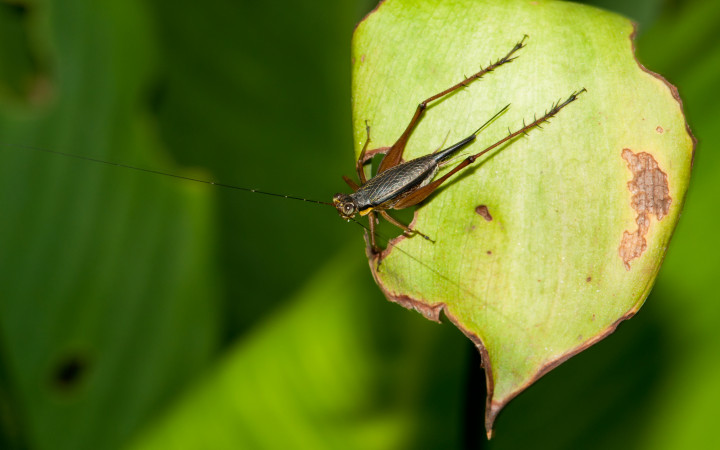Today’s Wonder of the Day was inspired by Noah. Noah Wonders, “Why/how do crickets make noise?” Thanks for WONDERing with us, Noah!
Crickets are mostly nocturnal, which means they rest during the day and become active at night. If you've spent much time outside after the sun goes down, you know it's then that the hills come alive with the sound of music — cricket music! Though male crickets' music may sound like a beautiful symphony to human ears, it actually serves two important, practical purposes for the crickets: it attracts female crickets and warns other male crickets to stay away.
Many people mistakenly believe crickets' signature chirp comes from their legs, but the only thing crickets get from their legs is hop-hop, not hip-hop! Look just a bit higher and you will discover it is actually crickets' wings that create their musical melodies.
The bottom of a cricket wing is covered with teeth-like ridges that make it rough. The upper surface of the wing is like a scraper. When crickets rub the upper and lower parts of their wings together, they create a chirping sound called “stridulating."
Not only are crickets natural-born fiddlers, they are living thermometers, too. Crickets prefer warm weather. The warmer it is, the more crickets will sing. This is why you may notice especially vocal cricket choirs on hot summer nights. If the temperature falls below 55° F, crickets usually won't sing at all.
Some people believe you can tell the temperature by doing a little cricket calculation. All you need to do is count the number of chirps in 14 seconds, and then add 40. The resulting number should be the approximate temperature. For example, if you count 30 chirps in 14 seconds, adding 40 gives you an approximate temperature of 70° F.
This relationship between cricket chirps and temperature is known as Dolbear's Law, but don't throw out your thermometer just yet. Dolbear's Law was based on studies of the Snow Tree cricket chirp. Researchers have discovered that the chirping of the common field cricket is not as accurate as that of the Snow Tree cricket. Field cricket chirping is affected by factors other than temperature, such as age and mating success.




